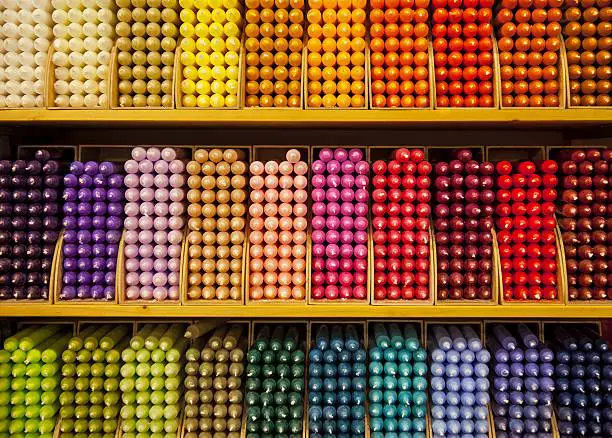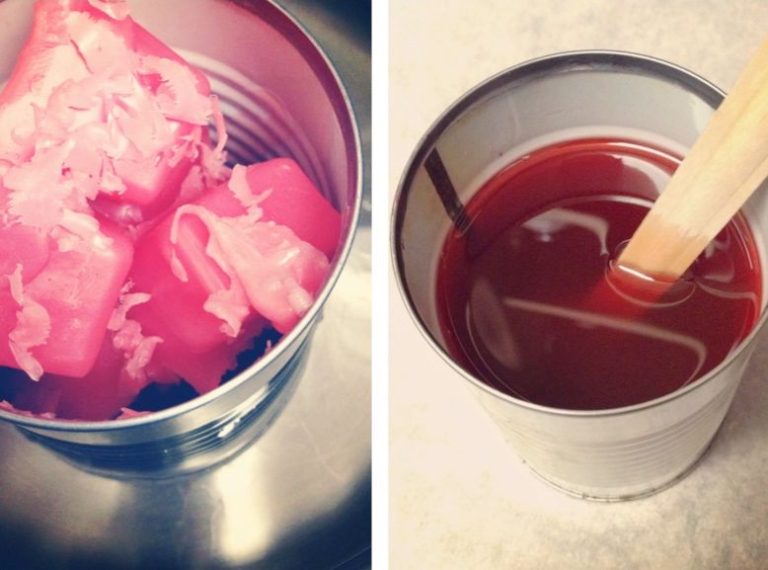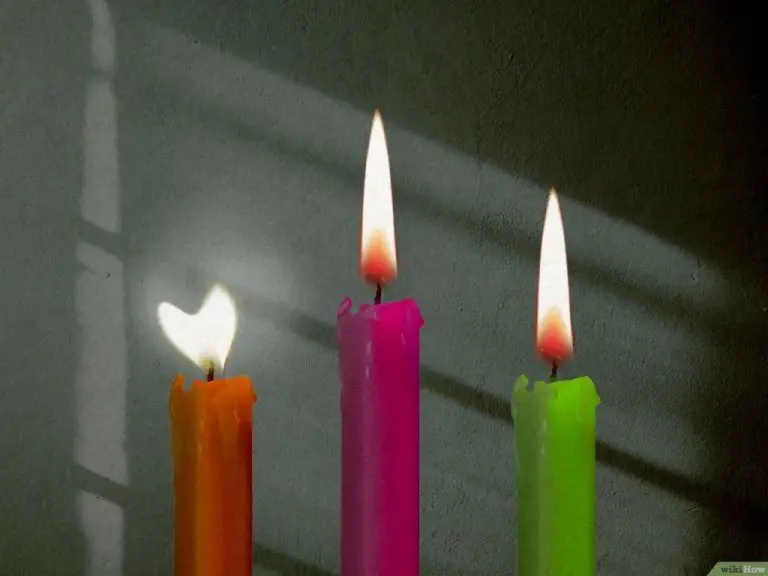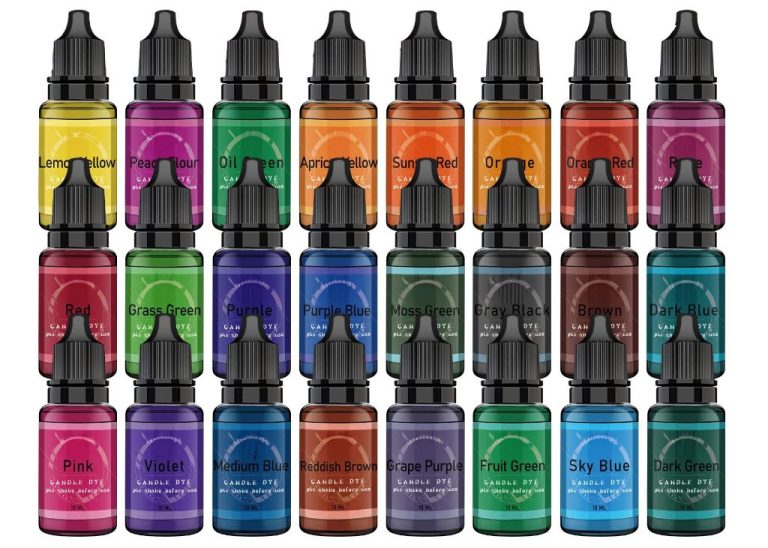Can I Put Food Coloring In Candle Wax?
Adding color to candle wax has become a popular way to enhance the aesthetic appeal of candles. While plain white candles have a classic simplicity, colored candles can add visual interest and make decorative statements. The practice of coloring candle wax likely emerged in the 19th century, when innovations in candle making enabled the mass production of candles in a variety of shapes, sizes and colors.
Historically, most candles were made from animal fat or beeswax and had a plain off-white color. The earliest evidence of colored candles dates back to ancient Rome, where dyes from plants or minerals were sometimes added to alter the look of tallow or beeswax candles. However, colored candles did not become widespread until the mid-1800s.
Today, there are many options for safely adding pigments and liquid dyes to candle wax to create candles in vivid custom colors. With proper precautions, homemade colored candles can burn cleanly and perform well. This overview covers key considerations when adding food coloring or other dye sources to candle wax.
Types of Candle Waxes
There are several common types of waxes used in candle making, each with their own properties and characteristics:
Paraffin Wax – This is the most widely used candle wax. It is made from petroleum, is inexpensive, and makes hard candles with excellent scent throw. However, paraffin has a low melting point and can produce a lot of soot when burned (source).
Soy Wax – Made from hydrogenated soybean oil, soy wax is a renewable resource and eco-friendly option. It has a low melting point but does not release chemicals or produce much soot. The downside is that soy candles have poor scent throw (source).
Beeswax – Used for centuries, beeswax comes directly from honeycomb. It has a very high melting point and burns slow and clean. Beeswax is expensive though, and has limited scent options.
Gel Wax – A mix of paraffin and mineral oil, gel wax makes translucent candles. It can hold fragrance oils well and burns cleaner than paraffin. But gel wax shrinks and cracks easily as it cools.
Food Coloring Options
Food coloring comes in three main types: liquid, gel, and powder. Here’s an overview of each:
- Liquid food coloring: Liquid food coloring is made with water, dyes, and propylene glycol. It’s the most common and affordable option. Liquid food coloring blends easily into foods and liquids but can affect texture. It’s great for simple coloring needs. Keep in mind liquid food coloring can stain. [1]
- Gel food coloring: Gel food coloring has a thicker, gelatinous consistency. It’s made with water, glycerin, dyes, and preservatives. Gel food coloring produces rich, vivid colors and holds up well during cooking and baking without affecting texture. It’s ideal when bold, intense colors are desired. Gel coloring is also less prone to staining. [2]
- Powdered food coloring: Powdered food coloring is made from dyes and filler ingredients like dextrin or maltodextrin. It comes in concentrated powder form that must be dissolved in liquid before use. Powdered coloring distributes evenly and doesn’t affect texture. It’s commonly used for dusting foods. Keep in mind powdered color can clump if not properly dissolved. [1]
Overall, the type of project, coloring needs, color intensity and budget will determine the best food coloring option.
Adding Food Coloring to Wax
When adding food coloring to candle wax, it’s important to follow some key steps for best results:
First, make sure to use an oil-based food coloring rather than a water-based option. Water-based food colors will not properly mix into the wax. Opt for gel food coloring, as the viscosity mixes better than liquid varieties [1].
Second, add the food coloring when the wax is melted. Heat the wax to 170-190°F to ensure it is fully liquefied before stirring in color. Adding dye to solid wax will lead to uneven coloring.
Third, add just a small amount of food coloring at first. A little goes a long way. Start with a toothpick dip of gel coloring and mix thoroughly before evaluating if you want a deeper shade. Adding too much at once can ruin the wax color.
Fourth, combine the food coloring into the wax slowly and gently for even distribution. Stirring too vigorously can introduce air bubbles. Fold rather than stir for best results.
Fifth, allow the colored wax to cool slightly before pouring into containers. Pouring at too high of a temperature can burn off some of the food coloring.
Following these tips will create rich, vibrant candle colors using standard food coloring [2]. Take care not to over-dye the wax, as less is often more when coloring candles.
Benefits of Colored Candles
Colored candles can add beautiful decoration and visual interest to any space. The pigments and dyes used to color candle wax create vibrant hues that stand out. Decorators often use colored candles to complement interior design styles or color palettes. For example, pale blue candles pair nicely with coastal decor, while deep red candles give a luxurious feel to formal dining rooms.

Beyond aesthetics, some believe that different candle colors have unique meanings and energies. Throughout history, various cultures have associated certain colors with specific emotions, moods, or purposes (source). For instance, blue is linked to tranquility and spiritual insight. Burning blue candles is thought to encourage inner wisdom. Meanwhile, red symbolizes love and passion. Lighting red candles sets the mood for romance. People may select candles in colors meaningful to their goals or activities.
In ceremonies and rituals, colored candles take on symbolic significance. Different colors align with elements like earth, air, fire and water. Candle color meanings also connect to guiding principles. White represents purity, yellow stands for intellect, and purple denotes spirituality, to name a few examples. When used mindfully, colored candles enrich spiritual practices (source).
Downsides of Food Coloring
Using food coloring to dye candle wax comes with some significant downsides. One major issue is that food coloring can cause staining. As explained on the Armatage Candle Company blog, food coloring is a water-based dye that does not properly mix into the wax.1 This can lead to the dye pooling or streaking in the wax, creating an uneven colored candle. The water content in the food coloring may also cause frosting or blooming on the candle surface.
Additionally, food coloring often fails to achieve the desired color in candle wax. On the GardenWeb forum, a user asks about using food coloring but is informed that “The food coloring is water based and will not mix with the wax.”2 The food dye tends to remain separated from the wax rather than dissolving evenly throughout. This makes it extremely difficult to achieve a uniform, vibrant color.
Overall, food coloring can create staining, frosting, and uneven coloring when used in candle making. Candle makers are better off using oil or wax-based dyes specifically formulated for candle wax to achieve even, consistent colors without these downsides.
Alternatives to Food Coloring
While food coloring is commonly used to dye candle wax, there are some natural alternatives that can produce vibrant colors without chemicals.
Plant-based candle dyes like turmeric powder, beets, and cinnamon can infuse wax with rich hues. Simply grind spices into a fine powder and mix sparingly into melted wax before pouring candles. Herbs like rosemary and lavender can also provide pale pastel colors when infused into wax.
Essential oils like lemon, orange, and peppermint contain natural plant pigments that will tint wax. Usually only a few drops are needed per pound of wax to achieve a saturated color. Tea tree oil makes an olive green while rosehip oil produces a light pinkish tone.
Another option is grated candle dye blocks which come in an array of vivid colors. Shave off flakes and melt them directly into wax – a little goes a long way. Crayons can also be shaved to produce bold colors.
With some creativity, candles can be vibrantly colored using natural materials. While it takes some testing to find the right amounts, plant-based dyes are a safer alternative over chemical food coloring.
Candle Dye Safety
When working with any dyes or chemicals, it’s important to consider safety. Some chemical dyes can contain toxic ingredients like benzene, toluene, and VOCs that can be irritating or harmful when inhaled (CandleScience). Synthetic fragrances in candles have even been shown to potentially cause mutagenic and genotoxic effects (Way Out Wax).
To ensure safety, look for candle dyes labeled as non-toxic and free of harmful chemicals. Natural vegetable-based dyes made from flowers, roots, and other plant materials provide a safer option. When working with any candle dyes, wear gloves and work in a well-ventilated area. Test a small amount when adding new dyes to ensure no irritation occurs. Also be sure to follow all manufacturer safety recommendations.
Making informed choices about candle dye ingredients and taking proper safety precautions allows crafters to safely add beautiful colors to their candle creations.
Storing and Burning Colored Candles
Properly storing colored candles is important for preserving the candle’s scent and color vibrancy. Colored candles should be stored in a cool, dry place away from direct sunlight and heat sources like appliances or vents. According to Soy Delicious, UV rays from sunlight can fade candle colors over time. A pantry, closet, or basement are ideal storage spots. Store candles with lids in their original containers or boxes to protect from dust.
When burning colored candles, limit burn times to no more than 4 hours at a time. According to Shearer Candles, longer burn times can cause the color to fade and affect wax pool consistency. Allow the candle to cool completely between burns, trim wicks to 1⁄4 inch before lighting, and keep wicks centered to ensure even burning. Avoid drafts which can cause candles to burn unevenly and too quickly. With proper storage and burning practices, colored candles can provide beautiful ambiance for up to 70 hours.
Conclusion
In summary, adding food coloring to candle wax can provide some fun and creative options for homemade or crafted candles. But food dyes do come with some drawbacks, like the potential to clog wicks or fade over time. With some precautions, food coloring can be used successfully in candles, but high-quality candle dyes are a safer alternative that will provide better results. When working with any candle dye, be sure to take steps to protect yourself and handle candles safely. With a bit of care and creativity, you can make candles in any color you desire, whether using food coloring or other options.
Despite the popularity of using food dyes, candle makers are best turning to professional-grade dyes to achieve vibrant, long-lasting colors that burn cleanly. But food coloring can be an accessible, affordable option in a pinch. As long as you know the potential downsides, use pure dyes sparingly, and take safety seriously, experimenting with food coloring in candles can allow you to customize your candle-making craft.






